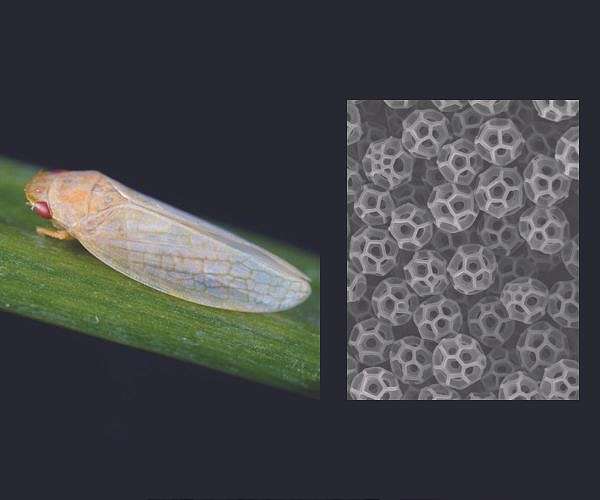
Uncovering nature’s blueprint for invisibility and enhanced solar harvesting
by Clarence Oxford
Los Angeles CA (SPX) Mar 21, 2024
Researchers at Penn State have unlocked the secrets of leafhoppers’ natural armor, revealing potential applications in optical technology and invisibility devices. The study, led by Tak-Sing Wong, a professor of mechanical engineering and biomedical engineering, successfully replicated the intricate structure of brochosomes-microscopic particles with unique light-absorbing properties. Published in the Proceedings of the National Academy of Sciences (PNAS), this research marks a significant step towards the creation of bioinspired materials for applications such as invisible cloaks and efficient solar energy harvesting.
Leafhoppers, seemingly ordinary insects, have fascinated scientists since the 1950s with their ability to produce brochosomes, small particles with a complex, soccer ball-like geometry. The purpose behind these particles has puzzled researchers for decades. However, Wong’s team has now clarified how brochosomes absorb visible and ultraviolet light, offering innovative approaches to controlling light reflection on surfaces.
“Our findings open up new avenues for technological advancement,” stated Lin Wang, the study’s lead author. “Imagine the possibilities of thermal invisibility cloaks that can hide the heat signatures of humans or machines, drawing inspiration from the natural world.”
The team’s success in creating synthetic brochosomes using advanced 3D-printing techniques is a testament to the intricate design of these natural structures, capable of reducing light reflection by up to 94%. This discovery could lead to numerous applications, including protective coatings for pharmaceuticals and advanced sunscreens, by mimicking the brochosome’s ability to scatter visible light and absorb UV rays.
This study also sheds light on the consistency in brochosomes’ design across different leafhopper species, emphasizing the specific pore sizes essential for their light-absorbing capabilities. The replication of these structures at a scale suitable for detailed optical characterization marks a pioneering achievement in biomimicry, leveraging nature’s designs for technological innovation.
Future research will focus on refining the synthetic brochosome fabrication process and exploring their potential in information encryption and other advanced materials. The collaborative effort between Penn State and Carnegie Mellon University researchers underscores the interdisciplinary nature of this work, which is supported by the Office of Naval Research.
This research not only demonstrates the untapped potential of biomimetic studies but also highlights the broader implications of understanding and replicating natural phenomena for solving complex engineering challenges.
Research Report:Geometric design of antireflective leafhopper brochosomes
Related Links
Penn State
Space Technology News – Applications and Research







